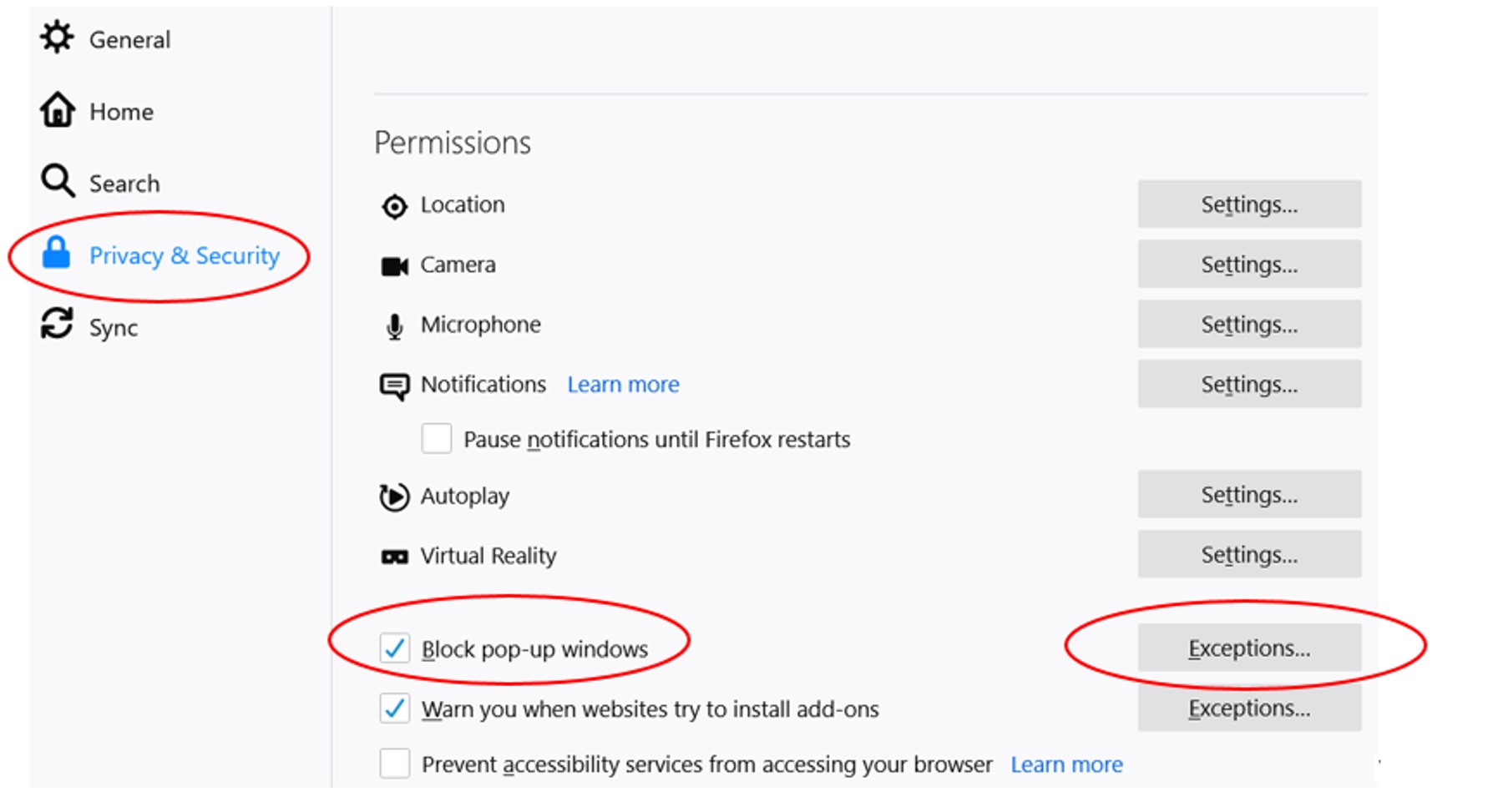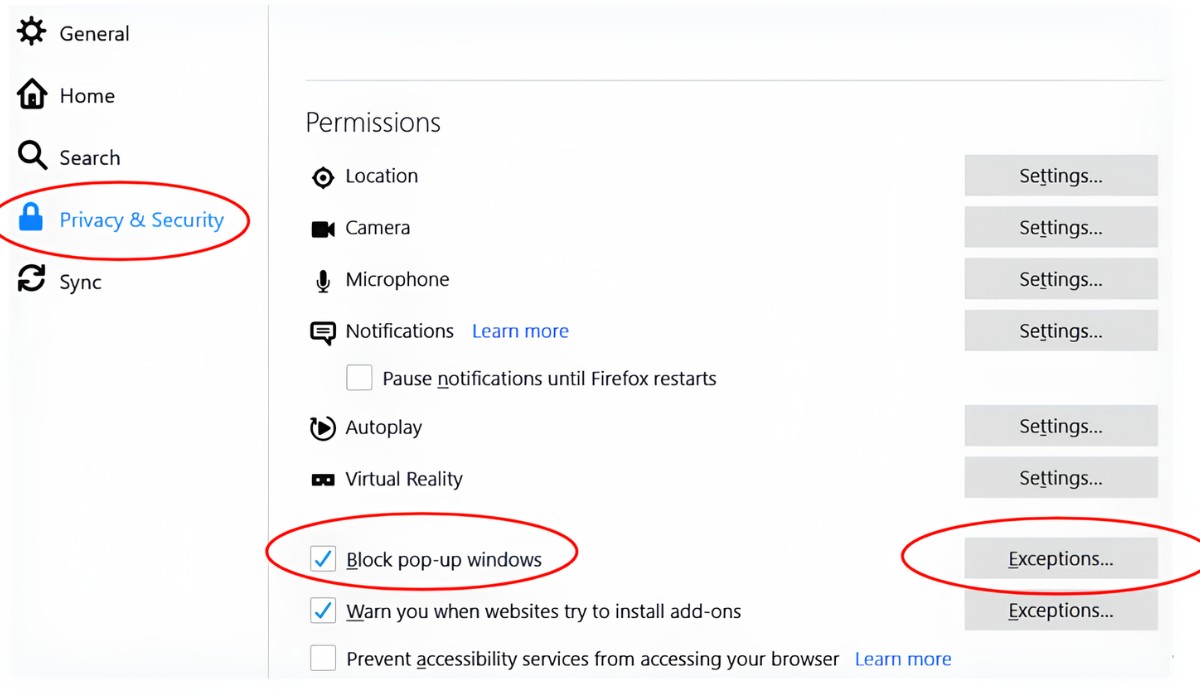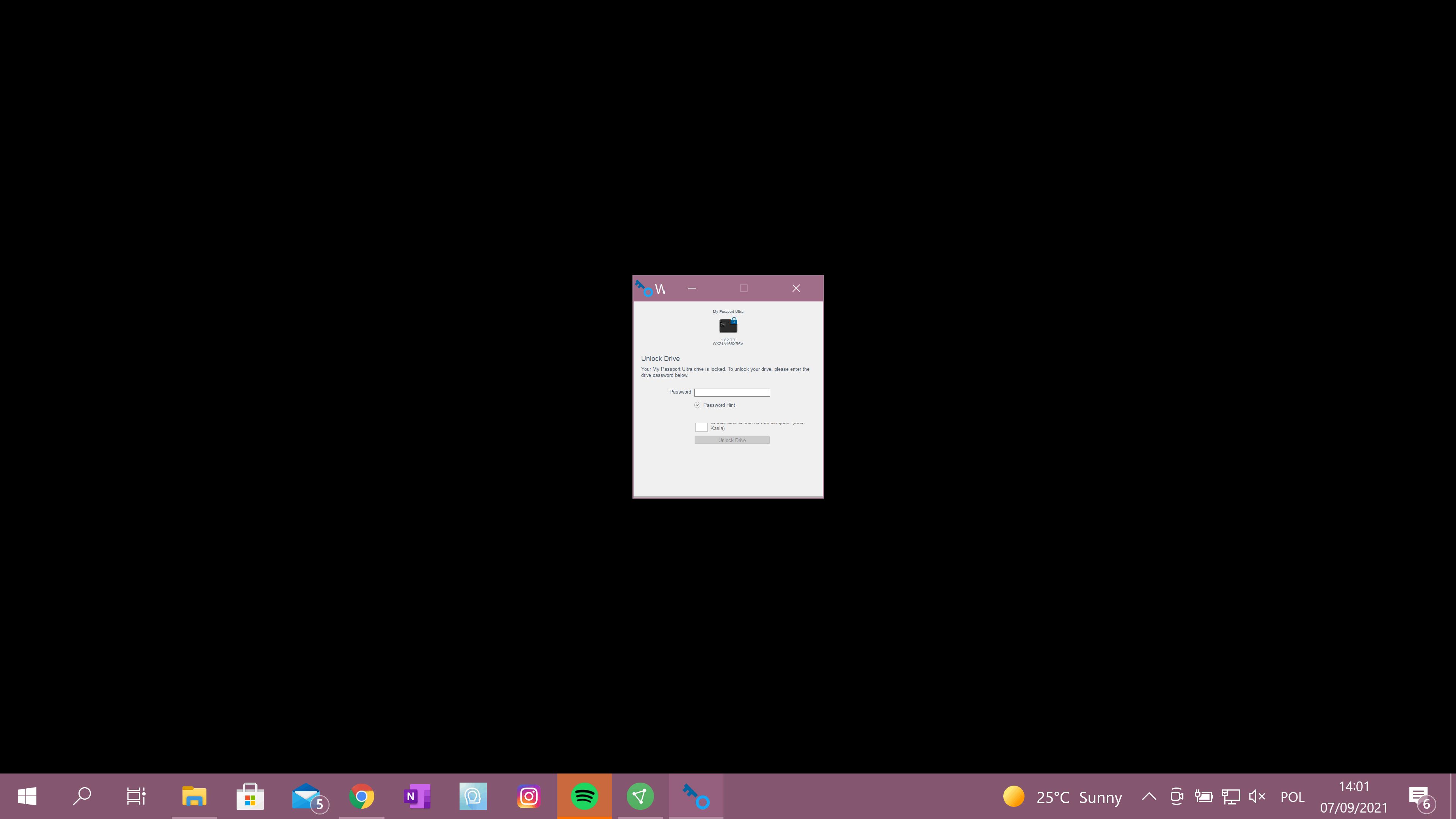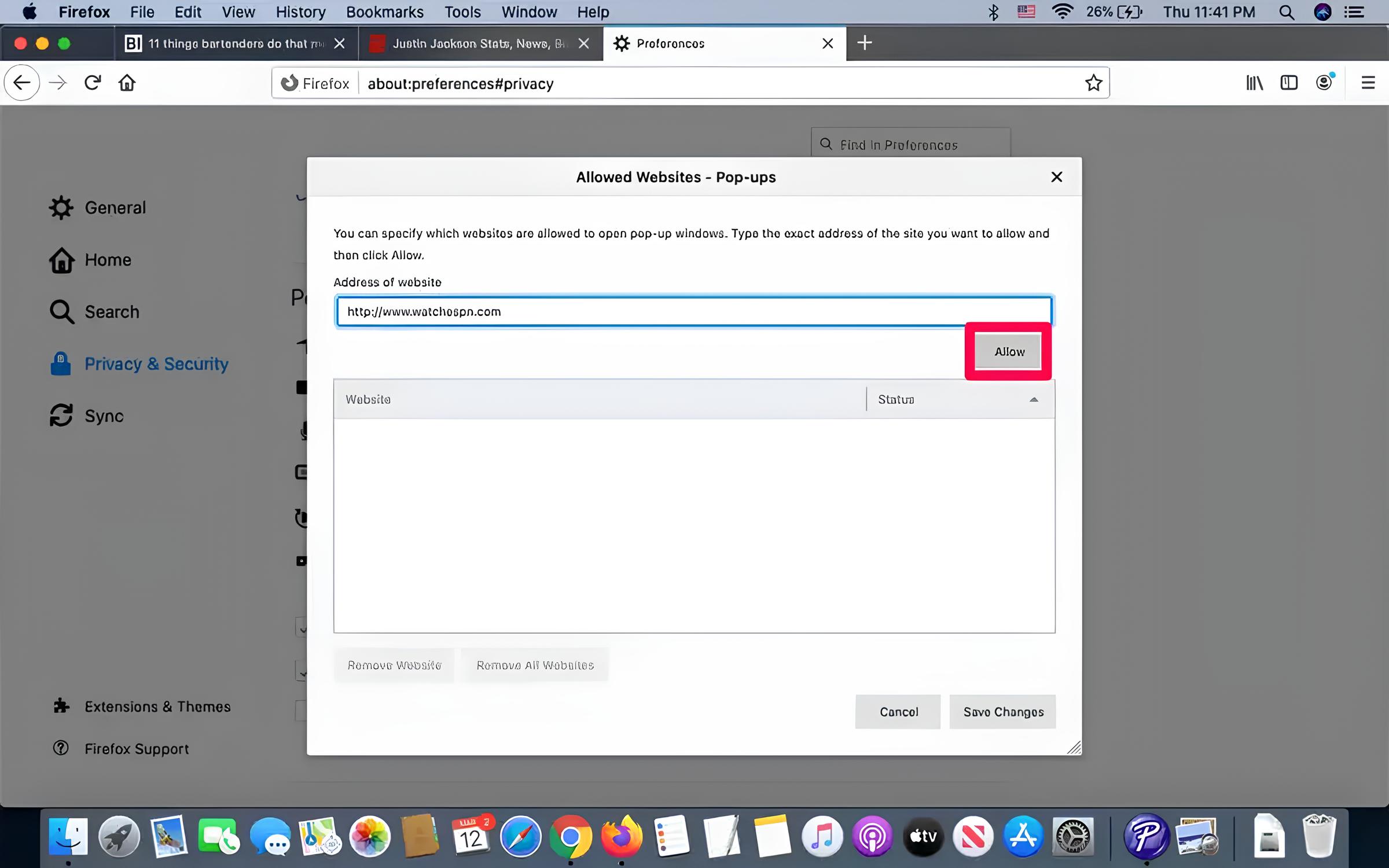Introduction
When it comes to browsing the web, pop-up windows can be both a blessing and a curse. While they can provide valuable information or enhance user experience on certain websites, they can also be intrusive and disruptive. Fortunately, modern web browsers like Firefox come equipped with built-in pop-up blockers to help users manage these pesky pop-ups.
In this article, we'll delve into the intricacies of disabling the pop-up blocker in Firefox. Whether you're encountering issues with legitimate pop-ups being blocked or you simply need to adjust your browser settings for a specific website, understanding how to manage the pop-up blocker in Firefox is essential for a seamless browsing experience.
So, if you've ever found yourself frustrated by a blocked pop-up that you actually wanted to see, or if you're just curious about how to customize your browser settings, you've come to the right place. Let's embark on a journey to uncover the inner workings of Firefox's pop-up blocker and learn how to wield its power to suit your browsing needs.
Accessing the Pop-Up Blocker Settings
Accessing the pop-up blocker settings in Firefox is a straightforward process that allows users to customize their browsing experience. Whether you want to temporarily disable the pop-up blocker, manage exceptions for specific websites, or adjust the overall behavior of pop-ups, accessing the settings is the first step towards taking control of your browsing environment.
To access the pop-up blocker settings in Firefox, start by opening the browser and locating the menu button in the top-right corner of the window. The menu button is represented by three horizontal lines and serves as the gateway to various browser settings and options. Click on the menu button to reveal a drop-down menu, and then select "Preferences" if you're using a Mac or "Options" if you're using Windows.
Once you've accessed the preferences or options, navigate to the "Privacy & Security" tab, which houses a plethora of settings related to user privacy and browsing security. Within this tab, you'll find the "Permissions" section, where the pop-up blocker settings reside. Click on "Permissions" to unveil a list of options, including the settings for pop-ups.
Upon locating the pop-up settings, you'll have the ability to toggle the pop-up blocker on or off, depending on your current needs. Additionally, you can delve deeper into the settings to manage exceptions for specific websites. This level of customization empowers users to allow pop-ups from trusted sites while still benefiting from the protection offered by the blocker.
In essence, accessing the pop-up blocker settings in Firefox grants users the flexibility to tailor their browsing experience to their preferences. By navigating through the browser's intuitive interface and locating the appropriate settings, users can seamlessly manage pop-ups and strike a balance between accessibility and security.
In the next section, we'll explore the process of disabling the pop-up blocker in Firefox, shedding light on the steps required to temporarily or permanently adjust the blocker's behavior.
Disabling the Pop-Up Blocker
Disabling the pop-up blocker in Firefox is a straightforward process that grants users the freedom to control the display of pop-up windows according to their preferences. Whether you need to temporarily allow pop-ups for a specific task or permanently disable the blocker for certain websites, Firefox provides the flexibility to accommodate diverse browsing needs.
To disable the pop-up blocker in Firefox, start by accessing the browser's settings as outlined in the previous section. Once you've navigated to the "Permissions" section within the "Privacy & Security" tab, you'll find the option to toggle the pop-up blocker on or off. Simply uncheck the box next to "Block pop-up windows" to disable the blocker.
By disabling the pop-up blocker, users can ensure that all pop-up windows are displayed as intended by websites, allowing for a seamless browsing experience. This can be particularly useful when accessing web applications or online services that rely on pop-up windows to deliver important information or functionality.
It's important to note that while disabling the pop-up blocker can provide greater accessibility to certain websites, it also exposes users to potential risks associated with malicious pop-ups. Therefore, it's advisable to exercise caution when disabling the blocker and only do so for trusted websites.
In addition to the global toggle for the pop-up blocker, Firefox offers the option to manage exceptions for specific websites. This means that users can choose to allow pop-ups from certain websites while keeping the blocker active for all others. By adding exceptions for trusted sites, users can strike a balance between accessibility and security, ensuring that legitimate pop-ups are displayed while still benefiting from the protection offered by the blocker.
In essence, the ability to disable the pop-up blocker in Firefox empowers users to tailor their browsing experience to their specific needs. Whether it's for a temporary task or a permanent adjustment, the flexibility provided by Firefox's pop-up blocker settings ensures that users have full control over the display of pop-up windows, ultimately enhancing their browsing experience.
Managing Exceptions
Managing exceptions for pop-ups in Firefox allows users to fine-tune the behavior of the pop-up blocker to accommodate specific websites or web applications. By adding exceptions for trusted sites, users can ensure that legitimate pop-ups are displayed while maintaining the overall protection offered by the blocker.
To manage exceptions for pop-ups in Firefox, users can navigate to the browser's settings and access the "Permissions" section within the "Privacy & Security" tab, as outlined in the previous sections. Within the pop-up settings, there is an option to "Exceptions" or "Allowed Sites." Clicking on this option opens a dialog box where users can input the URLs of specific websites for which they wish to allow pop-ups.
Adding exceptions for trusted websites is particularly beneficial for users who frequently encounter legitimate pop-ups while browsing. For example, online banking websites, government portals, or web-based productivity tools often rely on pop-up windows to deliver important information or functionality. By adding these sites to the exceptions list, users can ensure that the necessary pop-ups are displayed without interference from the blocker.
Furthermore, managing exceptions provides a layer of security by allowing users to specify which websites are permitted to display pop-ups. This mitigates the risk of malicious pop-ups from unknown or untrusted sources, as the blocker remains active for all websites not included in the exceptions list.
The process of managing exceptions in Firefox is designed to be user-friendly and intuitive, empowering users to customize their browsing experience with ease. By leveraging the exceptions feature, users can strike a balance between accessibility and security, ensuring that they have control over the display of pop-up windows while safeguarding against potential threats.
In essence, managing exceptions for pop-ups in Firefox is a valuable tool for users seeking to tailor their browsing environment to their specific needs. By adding trusted websites to the exceptions list, users can enjoy a seamless browsing experience, free from the interruptions of the pop-up blocker while maintaining a secure online environment.
Conclusion
In conclusion, the ability to manage the pop-up blocker settings in Firefox provides users with a powerful tool to customize their browsing experience. Whether it's adjusting the blocker's behavior, temporarily allowing pop-ups for specific tasks, or adding exceptions for trusted websites, Firefox empowers users to strike a balance between accessibility and security.
By accessing the pop-up blocker settings through the browser's intuitive interface, users can toggle the blocker on or off with ease, granting them control over the display of pop-up windows. This flexibility is particularly valuable when encountering legitimate pop-ups on trusted websites, ensuring that users can access important information or functionality without interference.
Furthermore, the option to manage exceptions for pop-ups adds an additional layer of customization, allowing users to specify which websites are permitted to display pop-ups. This not only enhances the browsing experience by ensuring that necessary pop-ups are displayed, but also mitigates the risk of malicious pop-ups from unknown or untrusted sources.
It's important to note that while the pop-up blocker in Firefox serves as a valuable tool for enhancing browsing security, users should exercise caution when disabling the blocker or adding exceptions for websites. Careful consideration should be given to the trustworthiness of websites before allowing pop-ups, as this can impact the overall security of the browsing environment.
Ultimately, the ability to manage the pop-up blocker in Firefox reflects the browser's commitment to providing users with a customizable and secure browsing experience. By understanding how to navigate the pop-up blocker settings and leveraging its features, users can tailor their browsing environment to suit their specific needs, ensuring a seamless and protected online experience.

























